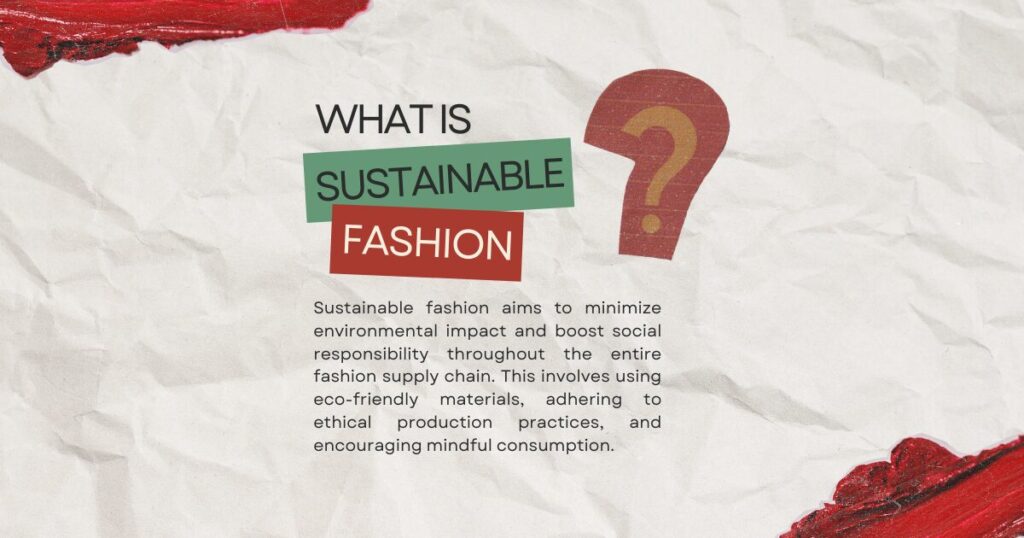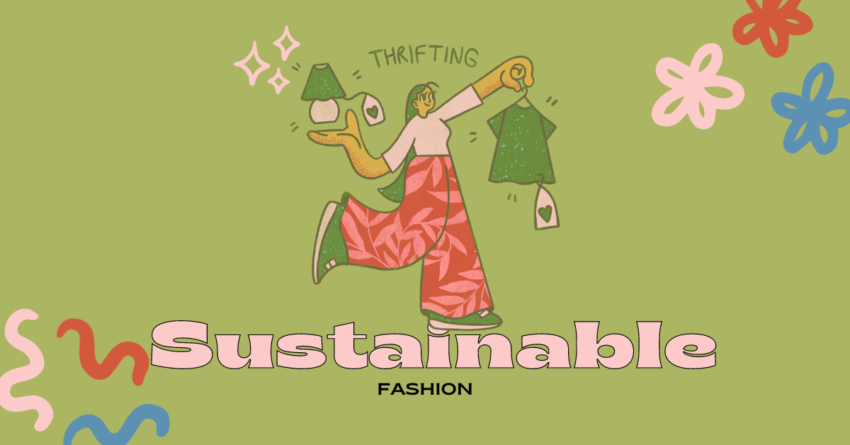Sustainable Fashion is often considered an expensive fashion choice or a complicated lifestyle to adopt. But if you remain aloof from the topic, you will discover, that it is simple to understand.
What is Sustainable Fashion?
It is simply to wear Eco-friendly clothing and opt for ethical fashion.
Sustainable fashion is the way of living, borne out of a will to be conscious of our choices and how they impact our planet. It is an individual’s contribution to ensuring the planet stays healthy and the environment stays clean. It is the advocacy for labour rights and fair industrial practices.
Sustainable fashion changes you from a fast fashion shopaholic into a buyer who delves into two questions before buying clothing or any item of consumption:
Where did it come from? (How was it produced?)
Where will it go? (How will it be consumed?)
For all those who ask these questions, here are 7 ways to turn that wardrobe of yours Green and embrace Sustainable Fashion:
1. Sustainable Sourcing and Efficient Resource Use
Sustainable fashion emphasizes the efficient use of natural resources, such as water, energy, and raw materials, to minimize waste. This includes using resources to reduce environmental degradation and conserve ecosystems.
It involves procuring or supplying environmentally friendly materials. For example, when organic cotton is produced without the use of harmful pesticides, it requires less water compared to conventional cotton.

2. Choose Sustainable Materials which have a low ecological Impact
Sustainable fashion prioritizes the use of materials with a low environmental impact. These materials are often biodegradable, recycled, or have a smaller ecological footprint. Examples include organic cotton, bamboo, hemp, and recycled polyester.
The materials used sustainably should be recyclable, allowing them to be reprocessed into new garments at the end of their life cycle. This helps reduce waste and conserve resources.
3. Reduce Carbon Footprint through Energy-efficient Production
It reduces the carbon footprint by producing materials efficiently without energy waste. For example: renewable energy sources ensure that energy can be reused. This improves energy efficiency in manufacturing processes.
By producing garments locally, brands can reduce the carbon emissions associated with transportation and support local economies.

4. Respect for Economic and Working Conditions
Ensuring fair wages and good working conditions is a cornerstone of sustainable fashion. This includes safe working environments, reasonable working hours, and access to benefits.
Sustainable fashion brands are committed to transparency in their supply chains. They promote the ethical treatment of all workers involved in the production process.
5. Sustainable Development of Society through Community Support & Empowerment
Sustainable fashion brands often engage in initiatives that support the social development of the regions in which they operate. This can include educational programs, healthcare initiatives, and economic development projects.
By creating fair job opportunities and investing in local communities, this environmentally aware fashion helps to empower workers and contribute to overall societal well-being.
6. Durable and timeless Sustainable design
It focuses on good quality garments, which, are designed to retain their quality. This reduces the need for frequent replacements and lowers the overall environmental impact.
Emphasizing timeless styles over fleeting trends encourages consumers to spend on items that will stay fashionable for many years, thus promoting sustainability.
7. Upcycling through the Re-use of Existing Materials
Upcycling involves creating new garments from existing ones. This process not only reduces waste but also adds unique value to the finished product.
It encourages creative approaches to design, as it involves repurposing materials and giving new life to old garments, often resulting in unique and one-of-a-kind pieces.

CONCLUSION
I have struggled to turn my wardrobe green many times over the years. Despite trying for more than five years, one major hurdle was my search for a brand that was 100% sustainable and ethical, which left me with very few options. Many of the sustainable brands were also unaffordable. While we cannot instantly start living an eco-friendly life, we can begin with small steps.
Over time, we have seen an increase in sustainable brands available at more affordable prices. Even if someone lives in an area where sourcing sustainable options is difficult, they can still incorporate some of the practices mentioned above and contribute to taking care of the planet.
The Way Forward
Ultimately, the desire to go sustainable starts as a mindset. To develop this mindset, one must be disciplined, conscientious, resilient, and empathetic.
We should advocate for sustainability without imposing it—promote the positive impact of sustainability but remain tolerant of those who choose a different lifestyle.
Never spread positivity by becoming negative. Any movement aiming for peace must remain peaceful throughout its journey, or it is bound to collapse.
Let us focus on our lives first, make the smallest sustainable changes, and share positive messages in the simplest ways.
That oversized denim jacket you wore at sixteen could still be worn at thirty, even if it wasn’t produced as ethically as clothing is now. By keeping it well-maintained and in your wardrobe, you kept it out of a landfill.
And let the planet breathe.
